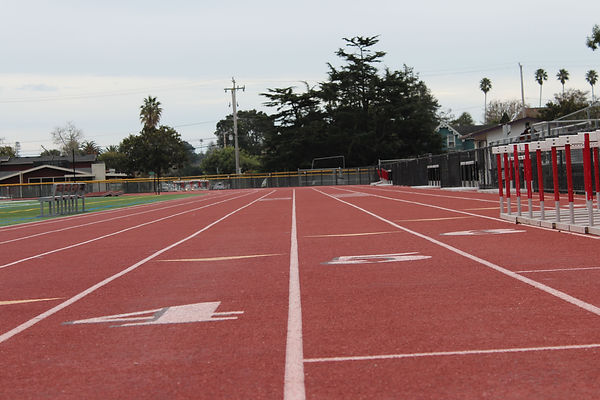Natalia Kamimura
Period 4 photography 2020

Portrait Photo
#1

Juxtaposition photoshop

Juxtaposition Collage

Portrait photo
#2

Aperture
wide vs small


SHOES SHOES SHOES

OBJECT STUCK IN TIME

Zoom Picture

Aperture
Portrait
1

Aperture Portrait
2


Value ASSIGNMENT





OBJECT CAUGHT IN MOTION

Tracking Action


Exposure is the amount of light let into an image. It is determined by shutter speed, lens aperture and scene luminance. Shutter speed is the amount of time an image is exposed to light or how long the shutter on a camera stays open. an aperture is a hole or an opening through which light travels. It determines how much of an image is in focus. ISO measures the sensitivity of the image sensor. The lower the number, the less sensitive your camera is to light.
I utilize these in photography to change the effect and feeling my pictures give off. They can change the way an image is portrayed. I use these to add more depth and give my photos unique and specific characteristics.
These alter your images in many different ways. This can include changing a photo's amount of light areas of dark spots, how much of an image is in focus -wether it's the entire image or just a small focus spot-, and how blurry or in focus something or someone is.

Favorite Aperture Portrait

Favorite Shutter
Speed
Picture
Static and Dynamic Composition Project
Static Still life

Static Portrait

Static Architecture

Static Landscape

Dynamic still life

Dynamic Portrait

Dynamic Architecture

Dynamic Landscape

Static and Dynamic Written Essay
My static images achieve composition by equilibrium and central focus. My photos are relatively simple with straight lines. Subjects and objects or the focuses of the images are centered with even surroundings. My dynamic photos achieved composition with angled people and objects, non-horizontal lines, and dynamic angles and lines. In my first static image the point of interest is the pair of sunglasses in the center of the chair. The chair adds to the picture by making the sunglasses seem more central in the image. The dominant element in my second static image is Ella and Gigi. They are both standing straight and their bodies are parallel to each other. The bike racks act as subordinate elements and support the picture by adding a kind of border and making everything seem even. The point of interest in my third photo is the lines on the table. The windows behind the table make the lines seem more straight because they are perpendicular and they make 90 degree angles. They support the dominant elements and act as subordinate elements. The lines on the track in my fourth static image are my point of interest. They are evenly parallel and give the picture some depth because of the way they continue off into the distance.
For my dynamic still life, the lens of the camera is the point of interest because it is centered in the screen. It is not static because the entire picture was taken at an angle. The objects around the camera would be the subordinate elements of the photo. In my second dynamic image, Sofia and Mathew are the dominant elements in the image. They are supported by the lines on the concrete and the pole that is being leaned on. These lines create angles that are not even or straight showing how the picture is dynamic. In my Dynamic architecture picture, the white panels going alongside the walkway act as the dominant elements in the photo. Because of their light color, they pop out. The picture was shot at a diagonal angle with plants and poles around to support it. In my final dynamic picture of a landscape, the soccer goal is the point of interest. The lines on the soccer field and the trees behind the goal would be the supporting elements in the image.
In static image one, color and contrast are being used to make the sunglasses pop. In static image two, balance and pattern are being used because of how symmetrical the picture is and how the elements in it are the same on both sides. In static image three, line and rhythm are being used because of the repeating parallel lines on the lunch table. In static image four, line and contrast are being used because of the lines on the track and the color contrast between the lines and the color of the track. In dynamic image one, form and shape are being used because the objects in the picture have many different shapes and edges as well as varying forms. In dynamic image two, movement and variety are being used because Sofia looks as if she was caught in a motion and there is variety in the placement of the subjects in the photo. In dynamic image three, rhythm and line are being used because the panels are being repeated and there are many lines going in different directions throughout the picture. In dynamic image four, space and color are being used because the landscape picture shows a big area of space making it seem very large. The color of the field is also a bright green making it stand out, as well as the bright yellow of the football field goal.
Rule Of Thirds Composition Project
Without Grid:

With Grid:

IMAGE 2:


Image 3:


Principles and Elements of Art through Photography


Post Processing Exercise
BEFORE: AFTER:


Tilt Shift Effect


Dragan Effect



Know Your Rights: Photography and the law
In New York 1999. Philip-Lorca diCorcia continues his art project “heads” which will soon be a popular art exhibition in Pace/McGill Gallery located in New York City. diCorcia sets up his camera in Times Square and somewhat randomly takes pictures of people passing by his set-up. Although diCorcia’s photography was popular among many, one man was unimpressed by a particular image. Erno Nussenzweig, an Orthodox Jew notices his face in a photo while viewing an exhibition catalogue in 2005. Nussenzweig contacted his lawyer and sued diCorcia and the Pace Gallery for the publication, exhibition, and financial profit of the image without his permission. The objective of the lawsuit was that diCorcia could no longer sell or publish the photograph. It also included $1.5 million in punitive damages and $500,000 in compensatory damages. The suit was dismissed in february 2006 by a New York state supreme court judge who claimed that diCorcia’s right to artistic expression overruled the privacy rights of Erno Nussenzweig. The law states that photographers must gain permission to take pictures on private property but there is freedom to shoot photos in public. Nussenzweig argued that his constitutional right to practice his religion, which in this case includes no graven images, was ignored by him being unwillingly photographed. New York state right-to-privacy laws prohibit the unauthorized use of a person's likeness for commercial purposes, that is, for advertising or purposes of trade. But these laws cannot be put into place if the photographs are considered to be art. All in all, the lawsuit did not pass, but if it had many popular photographs would likely not be available today. Of these popular photographs "Subway Passenger, New York City," 1941, is one of them. I somewhat agree with the outcome because I would not want many popular street photography works to be ruined but on the other hand I believe it should be mandatory to ask for the permission of the subjects in photographs before publishing or making profit off the art. I believe it is simply the most respectful thing to do.
GIFs



Forced Perspective


Low Key Photography




